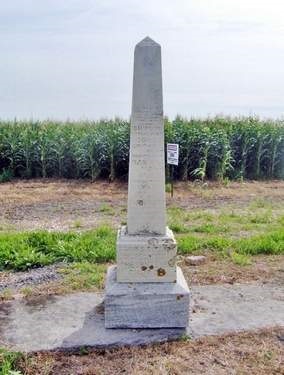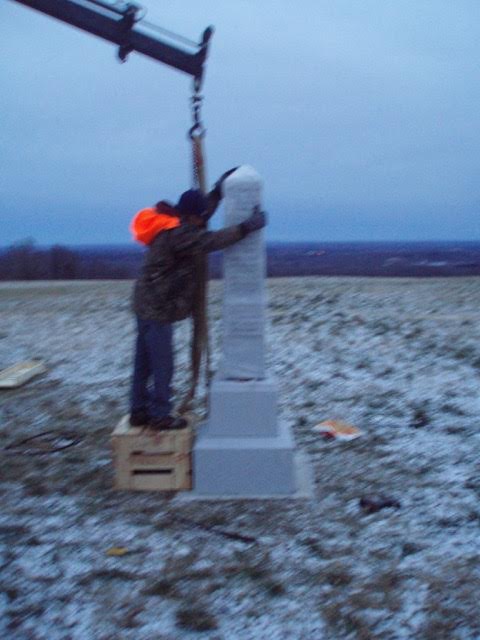The original Stow Square obelisk stood undisturbed in a farmer’s field for 113 years. This historic marble monument had been erected in 1899 to mark the site of the Presbyterian Church at Stow Square, one of the first churches to have been established north of Utica in the very early days of Lewis County in what was one of the County’s very first settlements at that time – Stow Square.
The monument also paid homage to Daniel Nash who was a pastor at that church and who subsequently went on to join Charles Finney in his travels as part of “The Second Great Awakening.” (This was a time in the history of New York State when a fervent righteous feeling swept the State resulting in the rise of abolitionism, temperance, and the establishment of such religious groups as the Mormons, The Oneida Community, and the Shakers.)
For years, the monument had been a destination for class groups and people who were interested in the early history of our area, and it was the only physical evidence left of a once thriving community at that place.
Then, several years ago, the property upon which the monument stood was sold and the purchaser, without any regard for history and armed with superstition and ignorance, wantonly destroyed it. And with its demise, an important link with our past was lost.
As a result, and in an effort to correct this injustice, the Lewis County Historical Society, in combination with the Lowville Presbyterian Church and other concerned citizens, led a four-year effort of grant writing and money raising to be able to erect a new monument (a five foot granite obelisk on a three foot two part base) as identical to the original as possible. We secured a small piece of property, with a “forever” clause in its deed in the form of an easement upon which it can be erected, which property is as close as we can possibly get to within a few hundred feet of where the monument originally stood. And on December 28, 2015, the new “replacement” was erected. Replacing the monument will not entirely heal the hurt that this “community” (all those who cherished the original) suffered when the original was destroyed, but it will serve to once again mark the site of this place which was a pioneer village of early Lewis County and pay homage to Daniel Nash thereby once again linking Lewis County to “The Second Great Awaking.” And as such will once again be a destination for those interested in Lewis County and New York State history.

Stow Square Monument 
Stow Square Monument Replacement 
Stow Square Monument Replacement



